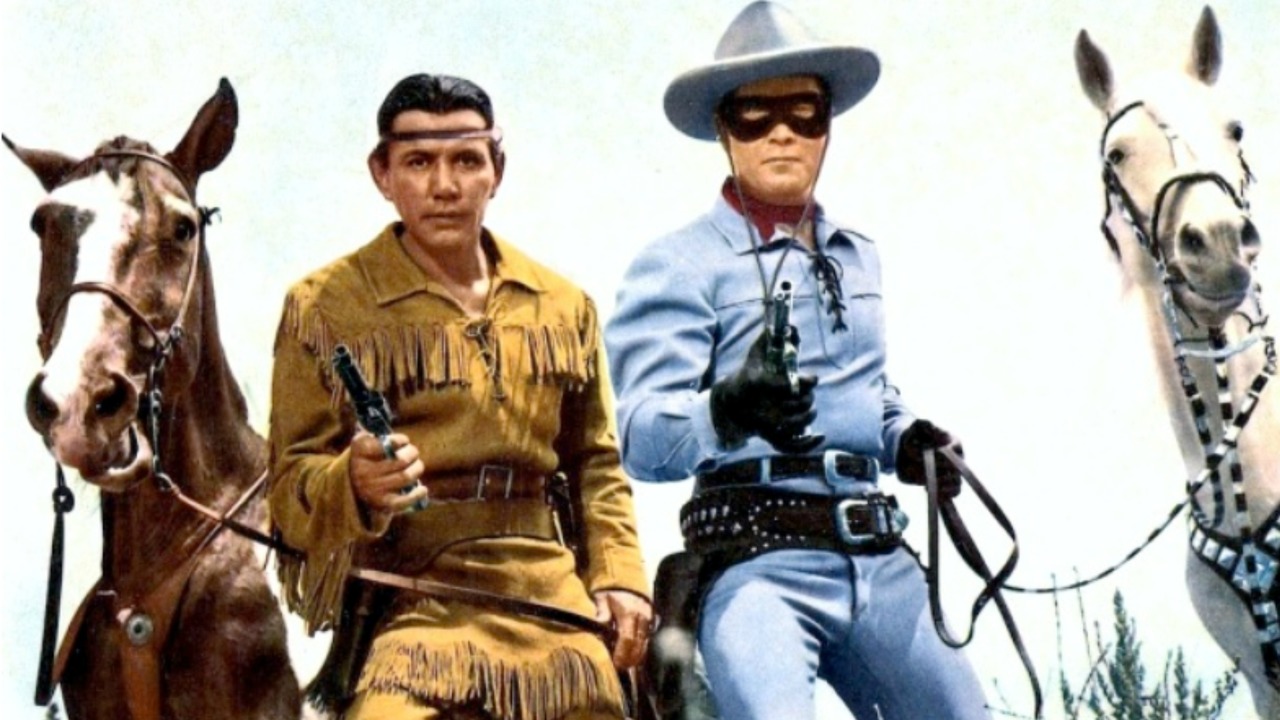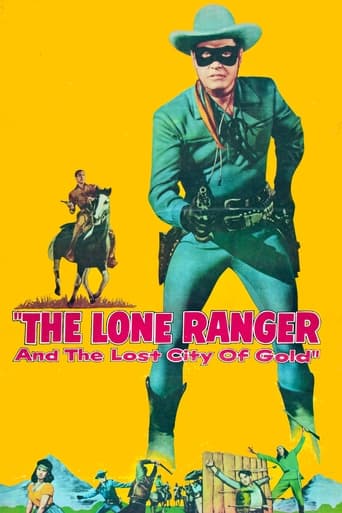



Wonderful character development!
It's hard to see any effort in the film. There's no comedy to speak of, no real drama and, worst of all.
View MoreThere is, somehow, an interesting story here, as well as some good acting. There are also some good scenes
View MoreWhile it is a pity that the story wasn't told with more visual finesse, this is trivial compared to our real-world problems. It takes a good movie to put that into perspective.
View MoreClayton Moore returns for one last big screen adventure as legendary vigilante The Lone Ranger, who attempts to uncover who is behind a series of murders and figure out why the villains are only interested in the medallions worn around the victims' necks.As a fan of The Lone Ranger, and of movies that feature long lost civilisations and legendary cities, I figured I couldn't really go wrong with The Lone Ranger and The Lost City of Gold; sadly, the film fails to live up to its promise, thanks to a weak script that gives our masked hero very little to do except to gallop from one location to another (accompanied by faithful sidekick Tonto, played by Jay Silverheels), occasionally taking time out to pose as a Southern gentlemen in order to fool femme fatale Frances Henderson (Noreen Nash) into revealing her plans. Meanwhile, respectable town physician Dr. James Rolfe (Dean Fredericks), who wears one of the much sought after medallions, struggles to choose between his job and his sweetheart, redskin Paviva (exotic beauty Lisa Montell).As for the fabled city of gold, it stays lost until the very end of the movie, when we are treated to a few seconds of a disappointing matte painting.5.5 out of 10, generously rounded up to 6 for the surprisingly nasty demise (for a family film) of Henderson's partner in crime Ross Brady (Douglas Kennedy).
View MoreLike "My Pal Trigger", "The Lone Ranger and the Lost City of Gold" is a kiddie Western far better than it has any right to be. It isn't as good as "Trigger" (which Roy Rogers said was his favorite among all his films), but "Lost City" won't (much) offend the taste of adults watching it. Indeed, they'll almost certainly enjoy the adult elements.It's far superior to the series, which was decidedly simple-minded and formulaic. Tonto is fully the Masked Man's equal, taking a major role in events. Indeed, the story is respectful to aboriginals, and makes explicit the hatred and violence they were subjected to.The biggest surprise comes when the town's doctor "comes out of the tepee" (sorry!) and reveals he's part Injun! The town's fat, vicious sheriff does not like that at all, and when Tonto speaks up in defense of the doctor, the loyal companion takes a bullet for his trouble.This is a surprisingly violent film, with the Masked Man (who normally shoots only to disarm) killing at least one bad'un. The chief villain is a woman (which presumably plays on little boys' hatred of girls). When it's time to do away with her no-longer-useful co-conspirator, she does it by throwing a largish tomahawk across the room! It imbeds itself in the guy's back, and he falls to the ground in front of the Masked Man. It's a delightfully gory (and Goreyish) moment one does not expect in a kiddie film.I'm a Herrmann/Goldsmith fan, so when I praise the outstanding score -- by Les Baxter -- you know I mean it. It's good even by the standards of A films, and largely sidesteps the clichés of B Westerns. And when Baxter needs something "primitive-exotic", he (naturally) steals from Stravinsky. Someone should arrange a concert suite of the best parts -- it's //that// good.Oh, they //do// find the Lost City of Gold, the Cibola of legend. It's not geologically plausible, but who cares?
View MoreWhile I recall seeing the original Lone Ranger feature in 1956, I didn't see the second film, Lone Ranger and the City of Gold, until later on television. At the time of its release, I was in junior high school and had somewhat outgrown cowboy movies. However, when I did see it, I was astonished to see how violent it was as compared to the television version. First of all, you had Noreen Nash throwing a tomahawk into the back of Douglas Kennedy, who was running out on her. You may have seen that on television, but never on a show that featured a juvenile hero like the Lone Ranger. Also there is a scene, as depicted in the trailer on line, where the Lone Ranger turns and shoots a outlaw about ready to shoot him in the back. Ordinarily he (the Ranger) would have shot to wound, but not this time. The heavy takes a high dive off the roof. Tonto, although wounded, throws a knife right into the chest of an outlaw about to shoot the Ranger from ambush. It's true that the film helped to explain racial tolerance using a Indian doctor, posing as a white man, at a time when it would not have been feasible to take a stand against black and white relations, particularly since the film would have to be shown in the South. But these scenes of violence made one wonder where the censors were as far as protecting the image of the Lone Ranger. It was a very good film for its time and genre.
View MoreThis second full-length Lone Ranger feature doesn't measure up to the 1956 classic but is a fine film with enough rough and tumble action and moves along at a good clip. The Ranger looks into a series of mysterious murders which have a sinister pattern to them with peaceful Indians being the victims of a gang of hooded killers. There are more killings and violence usually associated with Lone Ranger adventures and the film has an undercurrent of racial insensitivity, the comments of which are sprinkled throughout the screenplay. The Ranger uses disguises as only he can to piece together clues and expose the outlaw band and bring them to justice. Clayton Moore and Jay Silverheels star in a colorful presentation that shows the desert and cactus country of old Tucson to good advantage. The music score is good but the familiar William Tell Overture theme is nudged aside by vocals that are interesting but lack the flourish and beauty of the Ranger's traditional theme.
View More